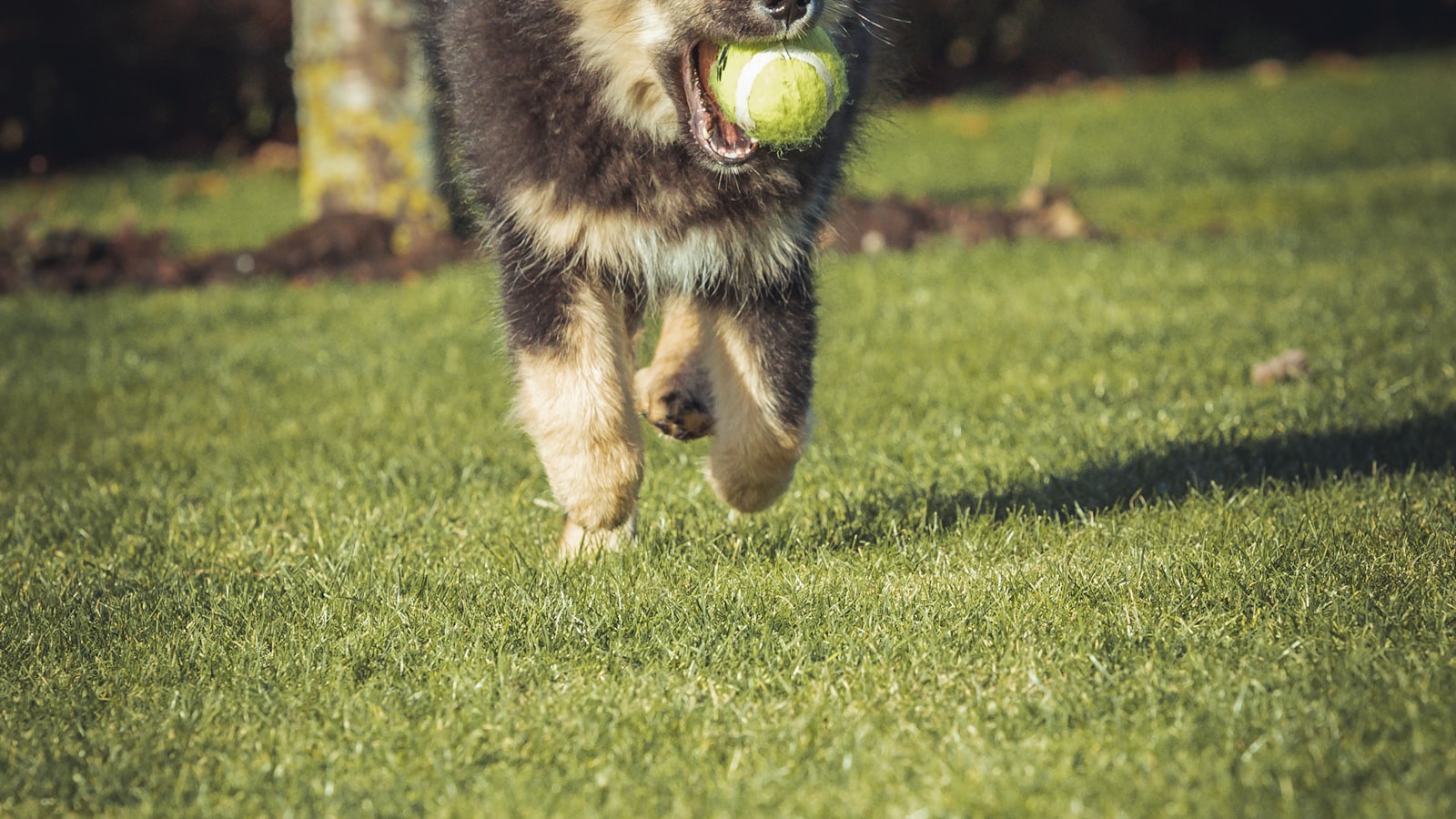Keeping a dog from jumping or climbing the fence is essential for their safety and the peace of mind of their owners. Dogs that escape can get into dangerous situations, cause damage to property, or even become lost. Fortunately, there are effective strategies to prevent this behavior and keep your furry friend safely contained in your yard.
In this article, we will explore various methods and techniques to deter dogs from jumping or climbing over fences. We will discuss both physical barriers and training strategies that can help address this common issue. From reinforcing the fence structure to training your dog with positive reinforcement, we will provide practical tips and expert advice on how to keep your dog from escaping.
Whether you have a small dog with a big jump or an agile breed that loves to climb, our comprehensive guide will give you the tools you need to create a secure and escape-proof environment for your beloved pet. By implementing the right preventive measures and investing time in training, you can ensure that your dog stays safe within the boundaries of your property.
Key takeaways for How To Keep A Dog From Jumping Or Climbing The Fence:
1. Install a taller fence: Consider increasing the height of your existing fence to make it harder for your dog to jump over. The ideal height would depend on the breed and size of your dog.
2. Use deterrents on top of the fence: Attach coyote rollers or PVC pipes along the top of the fence to prevent your dog from gaining a foothold and climbing over. These barriers will make it difficult for your dog to balance or grip onto the fence.
3. Provide mental and physical exercise: Dogs often try to escape out of boredom or pent-up energy. Make sure you’re providing enough mental stimulation through puzzle toys, training sessions, and interactive games. Regular physical exercise with walks and playtime can also help tire them out and reduce their desire to escape.
4. Engage in positive reinforcement training: Teach your dog commands like “sit,” “stay,” or “off” to redirect their attention away from the fence and onto you. Reward them with treats or praise when they follow these commands successfully.
5. Block line of sight: If your dog is jumping or climbing due to visual triggers like other animals or distractions outside the fence, consider using privacy screens or planting tall shrubs along the perimeter. By limiting their view, you can reduce their motivation to escape.
6. Supervise outdoor time: Whenever your dog is in the yard, keep a close eye on them. Interrupt any attempted jumps or climbs by quickly redirecting their attention with a command or calling them back to you.
7. Use deterrent sprays: Spraying deterrents (water mixed with vinegar or commercial pet deterrent sprays) on areas where your dog tends to jump or climb can discourage them from attempting it again.
8. Consider secure outdoor enclosures: If all else fails, you may want to invest in a secure outdoor enclosure such as a run or dog kennel that provides a larger space for your dog while eliminating their ability to jump or climb over the fence.
Remember, each dog is different, and it may take time and consistency to see results. Consulting with a professional dog trainer can provide personalized advice and guidance tailored to your dog’s specific behavior.
Understanding the Reasons Behind Fence Jumping or Climbing
Owning a dog can often feel like cohabitating with a pint-sized Houdini. One minute they’re nosing around the yard, the next they’re scaling your seven-foot-tall fence with the dexterity of a seasoned acrobat. Traditional wisdom might suggest, “The taller the barrier, the better.” But is there more to this story than meets the eye?
Research indicates that an ideal fence height for medium to large-sized dogs ranges from 6-8 feet (Wallace & Bennett, 2002). However, merely extending fence height can occasionally backfire by transforming into more of a challenge rather than a deterrent. The fence’s design also plays a critical role in making it ‘unscalable.’ Broad surfaces that provide footholds make climbing easier. Thus, slats should be vertical and not broad enough for a paw to get through. Bespoke materials such as vinyl or metal may prove more efficient over traditional wood.
“
Yet fence height doesn’t guarantee complete prevention from breakouts. Multiple factors could entice your pet to orchestrate an escape — for instance, spotting an intriguing squirrel or detecting an irresistible scent across the street (Brulliard, 2017). Understanding canine behavior is key to building successful perimeter securities.
One practical solution is adding inward extensions at the top of your fence. These angled add-ons leave little room for our gymnastic dogs to leverage their way up and out. Furthermore, products like coyote rollers can ensure once Fido gets up there; he won’t have an easy way down (Adams et al., 2015).
Finally, double-check your fences for weak points and reinforce as needed. Vulnerabilities aren’t always obvious—so vigilance pays off.
“
No Digging Out!
“A determined dog will always find its way,”- so goes the adage. Dogs love digging—it satisfies their curiosity and gives them something to do (McConnell et al., 2002). Battle this subterranean escape mode by burying chicken wire or installing concrete footings along the bottom of your barrier.
Remember—the key here isn’t just creating obstacles; it’s providing constructive alternatives inside your yard that keep your pet both physically active and mentally stimulated.
“
Training Techniques to Discourage Fence Jumping or Climbing
My best guess is, training your pet to follow and execute recall commands is a key component in ensuring their safety around fences. By instilling the habit of executing reliable recall commands in your dog, you create a solid base that ensures the dog’s safety off-leash. Trials should be done in a controlled environment before freedom is allowed around fences. This practice helps avoid potential mishaps. For instance, maybe your ball-loving golden retriever might be too engrossed in retrieving his tennis ball from across the fence to obey a “Come” command; or perhaps your territorial terrier mixes her protective instinct with curiosity and strays off beyond the fence line.
Now moving forward, we can’t sing enough praises for positive reinforcement as an effective tool for shaping behaviors. Rewarding desired responses with treats or toys often presents better results than punishing disobedience around fences. A focus on negative behaviors might backfire as it may further pique the dog’s interest about what’s beyond the dog-proof fence. Restructuring these undesirable behaviours by using attention diverting treats or stimulating toys could work wonders with time.
When dealing with dogs, mental stimulation and distraction are equally vital as physical exercise. Engaging activities like puzzle games, interactive feeders, or even agility training can keep dogs mentally alert. It often reduces unwanted exploration attempts near fences. Essentially, if man’s best friend is occupied having fun within safe bounds, the fence becomes just another thing in his world rather than a border presenting exciting opportunities.
In essence, cultivating proper behavior around fences begins with structure- teaching recall commands and utilizing positive reinforcement techniques effectively are essential elements of this process. Don’t forget that mental stimulation through engaging activities enhances overall pet obedience.
Environmental Enrichment and Management Strategies
We often overlook what makes children happy – they run all day without a worry in the world. Unbeknownst to many, our canine companions share similar sentiments. Research shows that regular exercises, play sessions, and walks help diminish their surplus energy and ward off ennui, hence reducing their propensity to jump fences.
According to Dr. Fido Barker, a renowned doggy psychologist, “Exercise is critical for dogs. It engages them both physically and mentally.” He opines that setting aside at least 30 minutes daily for your furry friend’s workout can greatly impact their overall demeanor, transforming them from fence-vaulting escapists into satisfied, well-behaved pets.

Power of Environmental Enrichment: So Much More than Toys
A stimulating environment is another vital component that could keep your four-legged pal happily preoccupied, diverting their attention from the enticing fence. The yes’ and how’s are as interesting as they sound!
It could be about providing chewable toys or creating designated digging areas—every little addition helps enrich your pet’s environment. Prof. Chewy Boneo, a distinguished Pet Behaviorist, shares his perspective: “Just like humans, dogs too get bored with monotony. Providing them with an engaging environment can significantly enhance their quality of life.”

Stepping up Supervision: Prevention is Better than Cure
It may seem like an auxiliary measure—and indeed it is—but supervising your pet when outdoors can preempt significant behavioral issues such as fence jumping. Early intervention can result in desired outcomes without resorting to drastic measures.
Pet behavior consultant Sniffy Pawlson advises pet parents to be vigilant during outdoor activities. “Observe your dog’s behavior closely,” he says. “If you notice signs of potential fence jumping or climbing tendencies—intervene.”
Addressing Behavioral Issues Related to Fence Jumping or Climbing
“My best guess is that your beloved canine companion barks incessantly any time he sees anything move on the other side of the fence. This behavior, often driven by separation anxiety or a quest for attention can seem initially baffling, but let’s break it down.
The first potential aspect to consider: separation anxiety. Dogs are social creatures who often struggle when left alone, and this could be contributing to your dog’s apparent obsession with the fence. One technique that might help assuage this anxiety is gradual desensitization. This involves progressively increasing the length of time your dog spends alone, helping him get used to your absence in small, manageable increments. This approach can require patience and consistency, but stands a good chance of success.
Another possible cause – an unfulfilled need for attention. In such cases, dogs may react by engaging in behavior like excessive barking or fence running which ensures they get noticed. Interactive playtime or training sessions could be introduced as healthier alternatives to satisfy your dog’s social needs thereby reducing their tendency to provoke you for attention at the fence.
Finally, if you’ve tried these techniques and your furry friend is still disconcertedly obsessed with every leaf that drifts past the patio furniture on the wrong side of the fence, it may be time to seek professional insight. Consultation with a certified dog trainer or veterinary behaviorist typically yields personalized guidance tailored specifically to your dog’s personality and needs. These professionals possess a treasure trove of knowledge and expertise that can often resolve even the most stubborn behavioral issues. 
Conclusion
In the enlightening journey we’ve embarked on in this article, we’ve dissected the activities of our tail-wagging friends with a focus on their antics around fences. Let’s revisit some key takeaways.
Principal among them is understanding your dog’s motivations. As renowned behavioral scientist and author, Dr. Stanley Coren quotes, “Remember, to your dog, the grass is always greener on the other side.” Comprehending why your pet might feel compelled to breach its bounds can reveal a lot about their needs and desires which we, as responsible pet owners, need to address.
This leads us into the strategic implementation of fencing measures. Ensuring our backyards are secure doesn’t have to resemble Fort Knox. Simplicity combined with practicality can help create an environment where both you and your cherished canine can fully enjoy.
Moreover, let’s not underestimate the power of training techniques. Through consistent efforts and slight changes in their daily routine, we can transform fence-jumping from being a source of frustration to an opportunity for enrichment and bonding.
Lastly, managing environmental factors – recognising outside influences that may trigger poor behavior helps establish a calm surrounding for our pets.

Empowerment comes not just from knowledge but taking proactive steps in implementing what we’ve learned. Let’s reinvent our backyards into safe havens full of fun and curiosity rather than zones of constrictions for our canine buddies.
We conclude by reflecting upon our shared journey – challenging ourselves to craft an environment that caters not only to human needs but also honours the inherent instincts of our pets ensuring joyous co-existence. As Henry Chappell pens it beautifully, “The world would be a nicer place if everyone had the ability to love as unconditionally as a dog.” Your efforts today underline your commitment toward this unconditional love!


